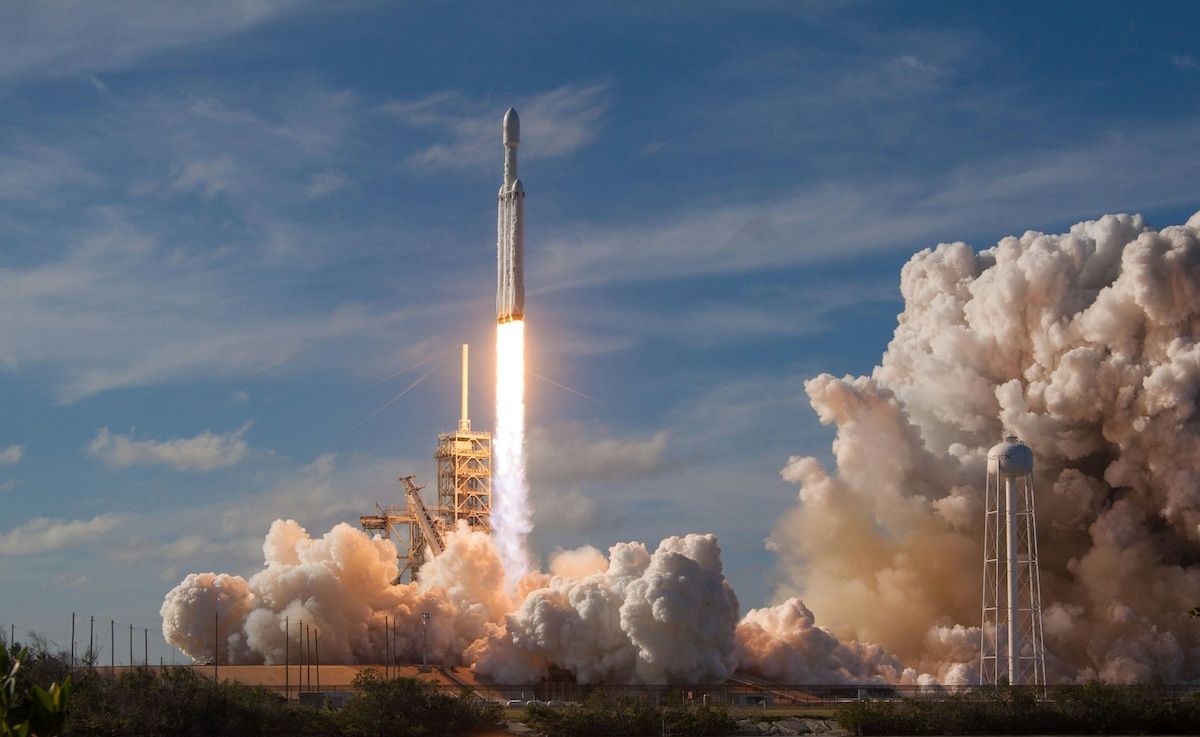Email ideas to build hype for your first book launch
Get more reviews, pre-orders, and sales for an upcoming release with timely newsletters to your biggest fans.


For readers, a book launch is a simple, one-day event. For its creator, it’s months of preparation and promotion. The same goes for releasing a course, music album, app, or any other content online platforms rank via algorithm. Day 1 performance can have a massive impact on the sales trajectory.
There are dozens of platforms and gurus dedicated to helping creators release content that people want to pay for on day one. Some of them are excellent! But regardless of which tool or advice you decide to go with, a newsletter should always be near the top of the priority list.
Your first launch is unlikely to be a walk in the park. For one, you don’t have prior experience to draw on. On top of that, subscriber lists are usually pretty thin for most creators at this stage. That’s ok! All you need to make things go smoothly is to start a bit early and have a plan, like this one.
What you need before the first launch email
Your goal should be to have a website and newsletter spun up and ready to link to by the time you send your first announcement about the upcoming release. And that might be earlier than you think. Non-fiction author John Weiler told me, “I think it's best to start talking about your book to your newsletter as soon as you're sure you're going to release it.” If that’s a year in advance, go for it! But it’s also fine to wait until 90 days out for a more condensed, less drawn out roadmap.
The first thing you’ll need to do is set up a newsletter. It should take an hour or less and little creative effort. You can even do a dry run without signing up for anything at demo.buttondown.com and learn how everything works before spinning up your list.

Next, build (or update) your website. This could be a WordPress blog, a Squarespace or Framer site, a simple Linktree or Carrd page, or your Buttondown email archive, even, if you want something simple. Anything you can to from social posts and newsletter swaps to grow your subscriber list.
There are plenty of ways to convert more website visitors to newsletter subscribers. Start by putting a newsletter signup form on every page of your site, with one page dedicated entirely to the details with a pitch for why people should join your list. If you don’t have an established backlog of content or reviews to build credibility, give new signups a free excerpt from your upcoming release.
Finally, make sure that you’ve created profiles on Goodreads, Amazon, Udemy, or anywhere else people might search for you, and create a pre-order link on any storefronts that you’ll be selling through. Some platforms rank your visibility on lists and front pages based on pre-order numbers, so you should include pre-order links in every newsletter up until the big day.
Your first launch email
Like it or not, a book or course’s cover image is one of, if not the most important factor in its sales. Writing for BBC, Clare Thorp explained that, “Everything about a book’s cover – the font, the images, the colours – tells us something about what we can expect to find, or not, inside…[Covers] are what will make you pick it up in the first place, then keep it on your shelf to remind you what it meant to you.” It’s a totem. One that you should introduce early and publicly.

One of the easiest and most impactful options for the first email in your launch series is a cover reveal. It doesn’t need to be long. Yoon Ha Lee pulled the curtain back on Fox Snare’s artwork with only 76 words. Rebecca W. Martin’s unveiling of Love in the Eternal City was a mere six paragraphs.
Going long is fine too. You might show off the artwork, write about the design process and inspirations, share a brief summary of the book, and describe what inspired it. But make sure to insert your pre-order link and launch date (not a countdown, since people open emails on their own schedules) directly below the cover. And while you’re at it, update your newsletter signup page and social profiles with info about the release.
Launch email #2
At this point, people can judge your content only by how it looks. They have no idea how it reads. You could tell them how thrilling and engrossing it is, but you’re, well, exceedingly biased. That’s why, two to three months before launching, you might want to prioritize getting reviews over pre-orders.
In his article Book Reviews, Not Sales, David Wogahn writes that “New authors—certainly self-published authors—have no symbolic capital. They are not (yet) known for producing quality books that seduce readers to the degree that they are willing to part with some of their disposable income, not to mention time.” His advice? Ask for reviews from people who already trust you.
For the second email in your launch series, ask subscribers if they want a free copy of the book or course, before it’s released, in exchange for a review. You could do this by embedding a survey in your newsletter and creating an email automation that adds anyone who responds to a special “Advance Readers” list, then sends them a digital copy of the content.
Without pressuring them, follow up with advance readers three to four weeks after they receive their copy and ask for a short review and permission to use it in your next newsletter.
Launch email #3
Between reviews and pre-orders, the plan thus far involves a lot of subscribers doing stuff for your benefit. Use this email to flip the script. Give them some free, possibly exclusive content, with no strings attached.

Writing fiction? Share a chapter that was edited out of the final manuscript or a short story that takes place before the upcoming release. Someone selling a video course could share one of the early lessons or a blooper reel. A comic book artist could share pages without finished coloring or lettering. Anything that makes subscribers feel like “insiders” and gets them pumped about the release. It doesn’t even have to take up the whole newsletter.
Veteran book launcher Emma Ellis shared her experience with /r/selfpublish, explaining that “I find not just talking all about my books works great. I plug my books once in a while, the rest is all general stuff…I'm a full time nomad, environmentalist, feminist...rambling on about my interests gets me as much and more interaction than just my books.”
However you choose to structure it, pump the brakes on asking for money and favors, possibly including nothing more than a freebie near the top of the newsletter and a pre-order link at the bottom. Consider it a small break before things ramp up in the final emails.
Launch email #4
By now you should have some reviews to share (for what it’s worth, David Wogahn recommends aiming for at least 10). As the big day approaches, it’s time to start sharing them. Thank your advance readers by name (they deserve at least that much!) and share two to three of their reviews early in the email. They’ll be some of your biggest drivers of sales.

Below the reviews, consider including some sort of giveaway or contest for anyone who pre-orders your content. Some authors raffle signed copies or a chance to name a character in the next book in the series. Course creators might offer one-on-one coaching or personalized plans.
Explain the conditions for entering, when you’ll announce the winners, and sign off with an update on launch day itself. Will you be selling copies at a local bookstore? Hosting a live virtual launch? Give subscribers enough lead time to make plans.
Launch email #5
The great thing about raffles is they justify sending another newsletter. You’re not pleading for more sales, you’re announcing the winners of your generous giveaway! Here, and throughout the entire launch series, you can fine-tune how heavily you promote an upcoming release based on data and insights from previous emails.
If your open and click rates have declined since the cover reveal, lean on more non-launch writing and media. Yoon Ha Lee, for example, sandwiched the results of his free copy content between a review of another author’s work and photos of his cat. If you see no reason to dial back the promotion, use this email to highlight new reviews or share photos of the launch day venue and the stacks of physical books you’ll be signing.
What to send subscribers on launch day
It’s the final leg. The end of the marathon. The day to throw subtlety and caution to the wind, linking to anything and everything relevant to the release of your baby. Day-of newsletters should include details on any launch events and every physical or virtual store that will stock your content, along with anything else that is relevant and fun.
Manjula Martin’s launch day email didn’t just link to her launch venue and event details, she also included all of the interviews and op-eds she did in the months that led up to it.

In Kelsey McKinney’s day-of newsletter, she explained how subscribers could request her book at their local library.
Ryan Stevens created and sent personalized bookmarks to people who bought the book on launch day.
Joel Heng Hartse promised readers that he would make a personalized Spotify playlist for anyone who bought his book at his in-person launch.
You’ve probably got a million other things scheduled for release day. Things that can’t be automated or handled in advance–your newsletter is not one of them! Draft your day-of email a few days in advance and schedule it for a specific time so you have more time and energy for everything else.
It’s all over (sort of)!
A successful launch, with decent pre-orders and a dozen reviews, will translate into several weeks of post-release sales. And all it requires is a newsletter, a relatively small list of subscribers, and six or seven well timed emails. Obviously, you need to keep pointing people to your book or course after the launch, but now you can get back to writing emails about whatever you like, without all the pressure and time constraints.
For your readers, it was a few newsletters, an occasional message in their inbox. For you, it was months of selling and self-promotion, constantly wondering how things would go on launch day. You can’t roll right through that into your next big project. You need to pace yourself. Rest and recuperate until your next release. That one, with everything you learned this time around, will be a piece of cake.